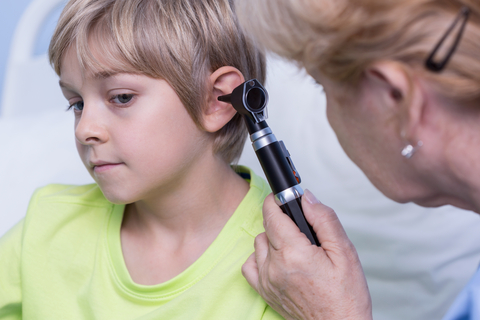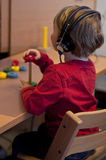How is glue ear diagnosed?
Medical history
Your child's medical history helps the doctor, nurse or audiologist (hearing specialist) to diagnose glue ear. In particular they are interested in certain symptoms which can indicate hearing problems:
- Recent research found that children who mishear, turn the TV volume up loud and report any ear-related problem in the previous 3 months are more likely to have glue ear.
Common tests for glue ear include:
Otoscopy is a procedure where your child’s doctor, nurse or audiologist looks into your child’s ear using a medical device called an otoscope to see the ear canal and eardrum. In children with glue ear, the eardrum can look cloudy, be pulled back into the middle ear and sometimes bubbles and fluid can be seen behind the eardrum.

Tympanometry is a simple test for fluid in the middle ear. The tympanometer measures the movement of the eardrum to a change in air pressure. The eardrum moves freely when the pressure inside and outside the ear is the same. When there is fluid in the middle ear, the eardrum does not move so well and sound waves bounce back rather than pass through to the middle ear. The test only takes a few seconds and doesn't cause any discomfort.
Audiometry is a test of hearing levels and is normally carried out by an audiologist (hearing specialist). There are different tests depending on the age of your child.
- Play audiometry is designed for children between 2-5 years and uses games, such as placing a block in a basket or ring on a cone, when they hear a sound. This makes testing fun and engaging for children. Children will wear headphones and the audiologist will test their hearing over a range of sounds and frequencies.
- Visual reinforcement audiometry is a test for very young children who are too young for play audiometry (designed for children aged 6 months to 2-3 years). The test uses visual reinforcement such as video animations or lighted toys placed to each side of the child and children are trained to look at the stimulus when they hear a sound. Children will often sit on a parent’s/carer’s lap and may wear lightweight earphones whilst taking the test.
- Pure-tone audiometry is a test for older children and adults. A range of sounds are played through headphones and patients respond by pressing a button.

